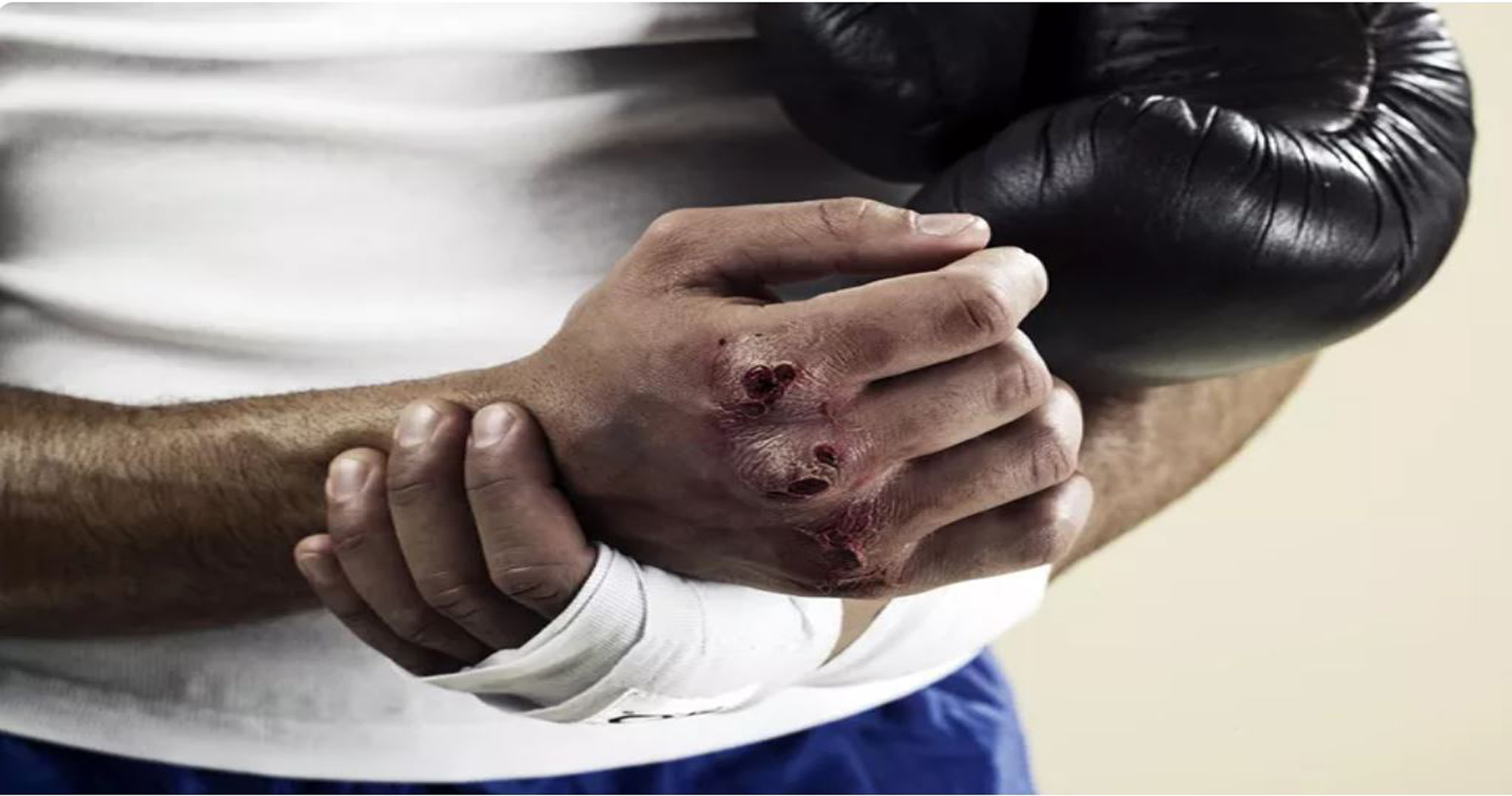
Boxer Fracture

Physical Therapy After a Boxer's Fracture
Physical Therapy After a Boxer’s Fracture.
A boxer’s fracture is a break in one of the bones in the hand, namely the fourth or fifth metacarpal.1 These bones run along the pinky and ring finger side of your hand from your wrist to the base of your fingers. Occasionally, a break in the first or second metacarpal will be classified as a boxer’s fracture. Some people refer to a boxer’s fracture as a brawler’s fracture.
Causes
The main cause of a boxer’s fracture is by a forceful blow to the hand that often occurs when you are punching something with a closed fist, hence the name boxer’s fracture.1 A boxer’s fracture may also happen after a FOOSH injury, which is trauma that may occur in a fall on an outstretched hand.
Symptoms
The main symptoms of a boxer’s fracture include:2
- Pain in your hand near the pinky or ring finger
- Swelling in the lateral part of your hand
- Decreased motion in your pinky, ring finger or wrist
- Discoloration or bruising in your hand
- Displacement of one of your knuckles in the hand
Typically these symptoms occur after trauma to the hand. If you have pain in the hand and suspect you have suffered a boxer’s fracture, you must seek medical attention immediately. Your doctor or local emergency department can properly reduce the fracture for you. Failure to seek medical attention can lead to permanent loss of function in the hand or fingers.
Initial Treatment
The diagnosis of a boxer’s fracture is done with an x-ray. The bones of your hand can be visualized, and the break in your metacarpal can be seen. If there is a separation of the bone near the fracture site, a manual reset may be required. In rare but severe cases, a surgical procedure may be necessary to help stabilize the fracture.2 Surgery typically involves using pins that pass through the skin and into the bones to hold the bones in place while healing occurs.
After the fracture is reset, you may be cast or immobilized with a splint to ensure proper healing occurs. Research published in 2016 found that outcomes were the same when a boxer’s fracture was treated with sprinting versus soft wrapping of the wrist and hand.1 The authors concluded that casting and splinting may not be necessary to treat a boxer’s fracture.
Be sure to follow the directions your doctor provides you in regard to splinting and casting.
Physical Therapy
After four to six weeks in the cast or splint, adequate healing should have occurred so that you may start physical therapy to rehabilitate your injury.
The initial focus of physical therapy is to counteract the effects of being immobilized while the fracture healed.2 Some impairments that you may experience include:
- Loss of range of motion
- Loss of strength
- Swelling
- Pain
All of these impairments can lead to loss of normal function in your hand and wrist. You may have difficulty gripping items or managing fine motor tasks such as writing.
PT Treatments
Your physical therapy program after a boxer’s fracture may include many different treatments and modalities. Electrical stimulation may be used to treat pain and swelling. Massage and soft tissue techniques may help to improve the mobility of the skin, muscles, and tendons around the wrist and hand.
Exercise should be the main component of your physical therapy program following a boxer’s fracture. Exercises to improve grip strength and finger strength are important to help improve hand function. The range of motion exercises for the wrist and fingers should be incorporated. Strengthening exercises should focus on the muscles of the forearm, arm, and hand. Wolff’s law states that bones grow and remodel in response to the stress that is placed upon it. Exercise stress is essential to ensure that the bones fully heal and remodel after a boxer’s fracture.
Your fracture should be healed and normal function should be restored about 10 to 12 weeks after the initial injury. Your specific rate of healing may vary depending on the severity of the injury and your current health status. Be sure to speak with your physical therapist and doctor to understand how your specific condition is expected to progress.
This article first appeared on 2020 About, Inc. (Dotdash) https://www.verywellhealth.com/physical-therapy-after-a-boxers-fracture-2696532#citation-1
Guest Blog by Brett Sears, Physical Therapist; Master of Science from New York Medical College
- Dunn, JC, etal. The boxer’s fracture: splint immobilization is not necessary. Orthopedics. 2016;39(3):188-92. doi:10.3928/01477447-20160315-05
- University of Rochester Medical Center. Boxer’s fracture.
